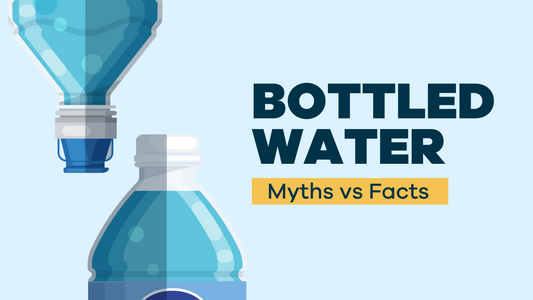
When Is It Safe to Swim?—Staying Healthy and Safe in Recreational Waters
Summertime is the time for fun in recreational waters. From swimming to fishing or surfing, bodies of water—lakes, rivers, oceans, etc.—have a profound impact on our physical and mental health. Recreational water safety is always in flux due to many different factors, including patterns of pollution and weather.
In this blog post, we will identify the different types of recreational water bodies and their potential contaminants. We will also explain recommendations for contaminant limits and tell you what to look out for when planning a day out on the water.
Whether you’re going to your local swimming pool or whitewater rafting on a nearby river, it’s important to know that the water is safe before you get in.
What Are the Different Types of Recreational Waters?
There are many different types of bodies of water, but which of them are considered “recreational”?
The EPA considers any body of water “recreational” if it is available for activities such as swimming, boating, fishing, rafting, and surfing. These water bodies include rivers, streams, ponds, lakes, and the coastline of oceans. [1] While untreated, many of them are held to specific regulations that guarantee their safety for recreation. However, it is also possible that recreational activities are banned in some untreated or unofficial recreational waters so make sure to heed the posted rules and regulations. Treated recreational waters include aquatic facilities such as public swimming pools, public spas, water parks and hot tubs. If you own or frequently visit a swimming pool, you might want to check out our post on swimming pool water safety.
Many recreational water sites are natural water bodies that are ecosystems for a variety of species. As such, they support a range of aquatic organisms, including varieties of fish, insects, reptiles, amphibians, and birds. Regulations are created to protect these organisms from harm, and to protect people from harm due to these organisms. (Some of these organisms can become nuisances during recreational use, others may even cause injury or pose significant health hazards to humans.) As a result, maintaining recreational waters means balancing the protection of human health against environmental protection targets.
What Types of Contaminants Could I Encounter?
Recreational waters may be affected by a variety of chemical and biological contaminants, as well as by other environmental processes. Sources of contaminants may include stormwater and sediment runoff (notably, pesticide runoff), direct discharge from industrial facilities and sewage treatment systems, atmospheric deposition (including acid rain), mining waste contamination, recreational activities themselves (such as outboard motor exhaust and sanitary waste dumping), and naturally occurring contaminants (e.g., algal toxins). Additionally, the levels and types of chemical and biological contaminants are affected by land use, land cover (roadways), forestry and irrigation practices, pH levels, and by the weather and climate. You can be exposed to contaminants through skin contact, by swallowing the water or breathing in spray or vapors, or through eating recreationally-caught fish.[2][3]
Chemical Contaminants
Some common chemical contaminants which may enter recreational waters and impact human health include [3]:
-
BTEX (benzene, xylene, ethylbenzene and toluene)–hydrocarbons used in petroleum refining and petrochemical industries that are released in oil spills
-
Cyanotoxins–harmful chemicals released by certain algae that may be present in algal blooms (some specific cyanotoxin chemicals include microcystins and cylindrospermopsin)
-
Methylmercury–a more toxic and bioaccumulative form of mercury that can build up in fish that live in waters contaminated with mercury
-
Polychlorinated Biphenyls (PCBs)–chemicals that are no longer produced in the US, but are resistant to breakdown in the environment and accumulate in fish
-
Various metals–discharges from industrial sites or past mining operations can release mixtures of metals and metalloids (for example, lead, manganese, and arsenic); some specific sites will be labeled as permanently unsuitable for recreation due to these toxins (such as abandoned quarries and mining pits)
Note: Wetsuits can trap contaminated water inside the suit, causing potentially increased risk of serious skin irritation and the absorption of chemicals through the skin. [3]
Biological Contaminants
The primary biological contaminants, or pathogens, that you may encounter in recreational waters include:
-
Bacteria–while bacteria are literally everywhere and are an integral part of life, harmful bacteria, such as certain strains of E. coli, Campylobacter, or Salmonella from leaky septic systems, sewer overflows, farm animal waste, pets, wildlife, and more, can make you sick. Other bacteria, such as Leigonella and nontuberculous mycobacteria, occur naturally but can proliferate in treated waters, like hot tubs, and cause illness, especially in those with compromised immune systems.
-
Protozoa–parasitic protozoa, such as Giardia lamblia and Cryptosporidium, cause gastrointestinal illnesses and may be present in areas with very poor sanitation or contamination.
-
Viruses–norovirus is responsible for the vast majority of viral recreational water illnesses. Other viruses that have caused illness outbreaks in recreational waters include adenovirus, echovirus and hepatitis A. [4]
The most common illness due to recreational water exposure is diarrhea. Water contaminated with fecal matter can feature various pathogens; some of these pathogens can cause diarrhea, though more serious illnesses can also occur. Skin irritation or rashes are also a common result of recreational water contamination. Weather, climate and water chemistry play a large role in the prevalence and impacts of biological contaminants. [5]
You can read more about common biological contaminants and the associated risks.
Fun Fact: People typically have about 0.14 grams of fecal matter on their bodies at any given time. This matter can wash off of swimmers' bodies and contaminate the water. [6]
How is Recreational Water Regulated?
One very important thing to note is that recreational water is regulated differently than drinking water—recreational waters are only meant for swimming or other activities that may result in direct skin contact or accidental ingestion but are not intended for long term consumption. On the other hand, drinking water regulations are developed in order to protect people from consumption of contaminated water over long periods of time, typically life long exposures, and are therefore distinct from recreational water regulations and generally much more stringent.
Recreational water is regulated by state and local agencies, which usually implement recommendations created by the federal EPA. The following table shows a selection of the EPA recommendations, which are generated with two different goals in mind: those meant to protect people when they’re in direct contact with the water (i.e., swimming), and those meant to protect people who are consuming organisms that were living in the water (specifically for surface waters). There are also regulations intended to protect the ecosystem and aquatic organisms themselves, but we will focus here on regulations meant to protect human health. [1][7]
When looking at the regulations, specifically the microbial recommendations, it is important to understand the concept of ‘indicator organisms’. These organisms are what they sound like–they indicate contamination. This means that the organisms themselves may not be infectious, but their presence lets you know that there may be contamination. The reason the infectious pathogens are not always measured is just that it is more difficult and expensive to measure them when compared with measuring indicator organisms. In this case, E. coli and enterococci are the indicator organisms because not all strains of these pathogens are infections, but their presence is a good indicator of fecal contamination.
|
Contaminant |
Swimming# |
Consumption of organism (PPB) |
|
Arsenic |
N/A |
0.14 |
|
Benzene |
N/A |
58+ |
|
Ethylbenzene |
N/A |
130 |
|
Methylmercury |
N/A |
0.3 mg/kg |
|
Polychlorinated Biphenyls (PCBs) |
N/A |
0.000064 |
|
Toluene |
N/A |
520 |
|
Microcystins (cyanotoxins) |
8 PPB |
N/A |
|
Cylindrospermopsin (cyanotoxin) |
15 PPB |
N/A |
|
Enterococci (fresh and marine waters) |
30 cfu/100 mL (monthly average)* 60 cfu/100 mL (single sample for beaches)^ |
N/A |
|
E. coli (fresh water) |
100 cfu/100 mL (monthly average)* 190 cfu/100 mL (single sample for beaches)^ |
N/A |
#for estimated illness rate of 32/1000 recreators
+full recommendation gives the range 16 - 58 PPB for a cancer risk of 10-6
*geometric mean over 30 days
*Fresh water generally means “ponds, lakes, reservoirs, rivers and streams,” although these different surface water types can vary significantly in condition.
^triggers a beach closure when a single sample exceeds the guideline
How is Recreational Water Tested?
To begin with, state and local regulatory bodies monitor and test their waters according to state guidelines. Testing sites and schedules for untreated recreational sites are determined by the location and seasonal frequency at which people interact with the water. Standards for these sites—which include public and private beaches, ponds, picnicking areas, and even boat ramps—depend on how often they are used, with particular emphasis on swimming activities. Popular beaches, for example, can be tested for microbial contaminants as often as once a week, with advisories issued as needed. [8] Treated recreational sites, or aquatic facilities, like public pools, water parks, and hot tubs, must be disinfected continuously and tested for general water quality parameters (including pH and disinfectant residual) regularly, typically at least once daily. Testing the water for microbial contaminants is also required, though the frequency and specific organisms that are tested vary by state. [9]
What To Look Out For in Surface Water
With everything we’ve covered, you might start thinking twice before engaging in recreational water activities. But we’re not trying to scare you away from diving into that lake. Thankfully, for the vast majority of circumstances, the most important thing is awareness. Here’s a quick list of things to pay attention to when you’re planning your recreational water activities: [10],[11]
-
Avoid water near pastures, farmlands, factories/chemical plants, or known dumping grounds
-
Look for signs of poor water quality, such as dirty, littered, turbid or discolored water, dead or decomposing marine life and algal blooms
-
Algal blooms are the rapid increase of algae populations in freshwater or salt waters. Unfortunately, due to climate change and increased pollution, algal blooms are a more frequent occurrence in waterways around the globe. Cyanobacteria are one of the microscopic inhabitants of algal blooms that can be extremely toxic.[12]
-
Avoid water that smells strong or off-putting, even if you can’t see much algae.
-
Keep your pets away from algal blooms.
-
Do not swim in water that smells like rotten eggs or sewage
-
Avoid swimming near pipes that drain into lakes or streams
-
It’s often good practice to wait a couple days after a rainstorm before swimming
-
Avoid swimming with open cuts or wounds
-
Avoid swallowing recreational water, and
-
Last—but certainly not least—do not swim in water that has signs posted nearby warning you to stay out of the water (these often acknowledge that a change in water quality has been detected through testing or other direct evidence)
If you have reason to suspect nearby recreational water is contaminated or you want to check the quality of a water body that may not be regulated, Tap Score’s Pond and Lake Water Test is designed to assess whether or not surface water is safe for recreational use.
As always, if you have any water or testing-related questions, feel free to reach out to the SimpleLab team of water quality engineers, treatment experts, and chemists. They are always available to help you out. Send them a message any time at hello@gosimpelab.com.
Read More
▾Nitrites, Nitrates, and Your Health
Heavy Metals And Bioaccumulation: What You Need to Know
The Exposome: How Environmental Exposures Impact Your Health
7 Heavy Metals Everyone Should Test For
7 Pathogens That Contaminate Drinking Water
Sources and References
▾- Recreational Water Quality Criteria
- Recreational Waters | US EPA
- Chemicals - Guidelines On Recreational Water Bodies
- Viruses in recreational waters
- Swimming-Related Illnesses
- Recreational Water Illness
- National Recommended Water Quality Criteria - Human Health Criteria Table | US EPA
- State-based Healthy Swimming
- National Beach Guidance and Required Performance Criteria for Grants, 2014 Edition
- Visiting Oceans, Lakes, Rivers
- How to Safely Visit Oceans, Lakes, and Rivers
-
Phosphates in the Environment
Recreational Water Quality Criteria pamphlet






